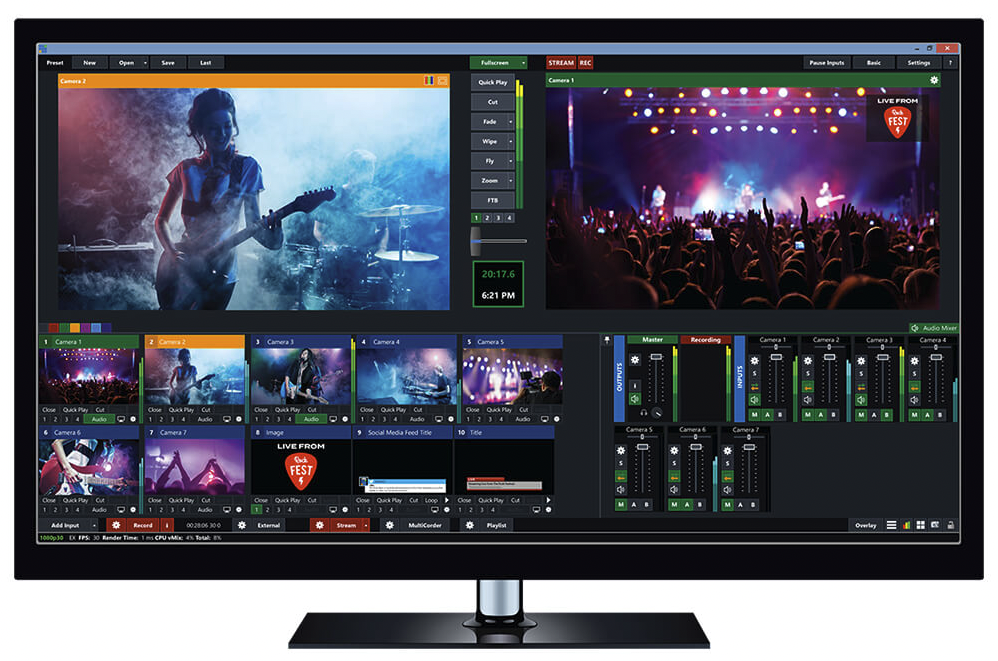Choosing a career path is a significant decision that can shape your professional and personal life.
In today’s rapidly changing job market, the traditional notion of full-time employment is being challenged by the rise of freelancing.
Freelancing offers flexibility, autonomy, and the potential for higher income, while full-time employment provides stability, benefits, and a structured work environment.
This article will explore the pros and cons of both career paths, examine the current trends in the job market, and provide insights to help you make an informed decision.
Freelancing vs. Full-Time Employment
Freelancing:
- Flexibility: Choose hours, projects, and clients.
- Diverse Opportunities: Work on various projects or niches.
- Remote Work: Often possible to work from anywhere.
- Income Potential: Earnings based on workload and rates.
- Self-Employment Costs: Handle taxes, health insurance, and benefits.
- Inconsistent Income: Earnings can fluctuate monthly.
- Self-Promotion: Must market skills and find clients.
- No Job Security: No long-term contract or guaranteed income.
Full-Time Employment:
- Stable Income: Regular salary and predictable pay.
- Benefits: Health insurance, retirement plans, paid leave.
- Structured Environment: Set hours and clear hierarchy.
- Job Security: Less uncertainty compared to freelancing.
- Career Growth: Potential for promotions and training.
- Limited Flexibility: Set hours and vacation days.
- Team Collaboration: Regular interaction with colleagues.
- Clear Role: Defined job responsibilities.
Table of Contents
The Rise of Freelancing
In recent years, freelancing has gained immense popularity, driven by technological advancements and changing work preferences.
According to a study conducted by Upwork and Freelancers Union, there are approximately 57 million freelancers in the United States alone, contributing $1.4 trillion to the economy annually.
Flexibility and Autonomy
One of the primary advantages of freelancing is the flexibility it offers. Freelancers have the freedom to choose their working hours, projects, and clients.
They can work from anywhere in the world, allowing for a better work-life balance.
This flexibility is particularly appealing to individuals who value independence and want to have control over their professional lives.
Moreover, freelancers have the autonomy to decide their rates and negotiate contracts directly with clients.
This gives them the opportunity to earn more based on their skills, experience, and market demand.
Unlike full-time employees who often have limited control over their income, freelancers can leverage their expertise to command higher compensation.
Potential for Higher Income
Freelancers have the potential to earn significantly more than their full-time counterparts.
According to a survey conducted by Payoneer, freelancers earn an average of $35 per hour, compared to $31 per hour for full-time employees.
This wage difference can be attributed to several factors, including the ability to work on multiple projects simultaneously, charge higher rates for specialized skills, and take advantage of tax deductions.
Furthermore, freelancers have the opportunity to scale their income by expanding their client base and building long-term relationships.
As they gain experience and establish a strong reputation, they can attract higher-paying clients and secure more lucrative projects.
This upward earning potential is particularly attractive to individuals who are motivated by financial success.
The Benefits of Full-Time Employment
While freelancing offers numerous advantages, full-time employment also has its merits.
Many individuals prefer the stability, benefits, and structure that come with being a full-time employee.
Stability and Predictable Income
One of the primary benefits of full-time employment is the stability it provides.
Full-time employees typically have a steady income stream, as they receive a fixed salary or hourly wage.
This stability can be reassuring, especially during uncertain economic times or when starting a family.
Additionally, full-time employees often enjoy benefits such as health insurance, retirement plans, paid time off, and professional development opportunities.
These benefits can contribute to a sense of security and well-being, as they provide financial protection and support personal growth.
Structured Work Environment
Full-time employment offers a structured work environment with clear expectations and defined roles.
Employees have set working hours, specific responsibilities, and a team to collaborate with.
This structure can foster a sense of belonging and provide opportunities for professional growth within an organization.
Moreover, full-time employees often have access to resources and tools provided by their employers, which can enhance productivity and efficiency.
They can also benefit from mentorship and guidance from more experienced colleagues, enabling them to develop their skills and advance in their careers.
The Current Job Market Trends
The job market is constantly evolving, and it is essential to consider the current trends when deciding between freelancing and full-time employment.
Shift Towards Remote Work
The COVID-19 pandemic accelerated the shift towards remote work.
Many companies have embraced remote work arrangements, realizing the benefits of reduced overhead costs and increased employee satisfaction.
This trend has created more opportunities for freelancers, as companies are increasingly open to hiring remote workers on a project basis.
Gig Economy and Skill-Based Hiring
The gig economy, characterized by short-term contracts and freelance work, is on the rise.
Companies are increasingly relying on freelancers to fill skill gaps and complete specific projects.
This trend favors individuals with specialized skills and expertise, as they can offer their services on a project basis and command higher rates.
FAQs – Freelancing vs. Full-Time Employment: What’s the Best Career Path?
1. Is freelancing more profitable than full-time employment?
Freelancing has the potential for higher income due to the ability to charge higher rates, work on multiple projects, and leverage specialized skills.
However, full-time employment offers stability and benefits that can contribute to long-term financial security.
2. Can freelancers enjoy the same benefits as full-time employees?
Freelancers are responsible for their own benefits, such as health insurance and retirement plans.
While they may not have access to employer-provided benefits, they have the flexibility to choose and customize their own benefit packages.
3. Is freelancing suitable for everyone?
Freelancing requires self-discipline, self-motivation, and the ability to manage multiple clients and projects simultaneously.
It may not be suitable for individuals who prefer a structured work environment or those who are uncomfortable with the uncertainty of income.
4. Can full-time employees transition to freelancing?
Full-time employees can transition to freelancing by gradually building their client base and establishing a strong reputation.
It is advisable to save an emergency fund and have a solid network before making the leap to freelancing full-time.
5. Are freelancers more prone to financial instability?
Freelancers may experience fluctuations in income, especially during periods of low demand or when starting out.
However, with proper financial planning, diversifying clients, and building long-term relationships, freelancers can mitigate financial instability.
6. Do freelancers have a better work-life balance?
Freelancers have the flexibility to choose their working hours and location, allowing for a better work-life balance.
However, freelancers may also face challenges in setting boundaries between work and personal life, as they are responsible for managing their own workload and client expectations.
7. Can freelancers have a stable career in the long run?
Freelancers can have a stable career in the long run by continuously building their skills, expanding their network, and adapting to market trends.
It is essential to stay updated with industry developments and maintain a strong reputation to attract consistent clients.
8. Are full-time employees limited in their professional growth?
Full-time employees have opportunities for professional growth within an organization, such as promotions, training programs, and mentorship.
However, freelancers can also experience professional growth by taking on challenging projects, expanding their skill set, and building a strong portfolio.
9. Can freelancers enjoy job security?
Freelancers do not have the same job security as full-time employees, as they are dependent on securing projects and clients.
However, freelancers can mitigate this risk by diversifying their client base, maintaining a strong network, and continuously marketing their services.
10. Can full-time employees have a flexible schedule?
Full-time employees typically have set working hours determined by their employers.
While some companies offer flexible work arrangements, such as remote work or flexible hours, the level of flexibility may be limited compared to freelancing.
11. Are freelancers responsible for their own taxes?
Freelancers are responsible for managing their own taxes, including filing quarterly estimated tax payments and keeping track of deductible expenses.
It is advisable to consult with a tax professional to ensure compliance with tax regulations.
12. Can full-time employees pursue freelancing on the side?
Full-time employees can pursue freelancing on the side, provided it does not conflict with their employment contract or company policies.
It is essential to communicate openly with employers and ensure that there is no conflict of interest.
13. Are freelancers more susceptible to isolation?
Freelancers may experience feelings of isolation due to working independently and not having colleagues in a traditional office setting.
However, freelancers can mitigate this by joining professional networks, attending industry events, and engaging in online communities.
14. Can full-time employees switch to freelancing for a better work-life balance?
Full-time employees can switch to freelancing to achieve a better work-life balance.
But it is important to carefully consider the financial implications, risk tolerance, and personal preferences before making the transition.
15. Can freelancers access the same networking opportunities as full-time employees?
Freelancers can access networking opportunities through industry events, online platforms, and professional associations.
While they may not have the same networking opportunities within a specific organization, freelancers can build a diverse network of clients and collaborators.
Summary – Freelancing vs. Full-Time Employment: What’s the Best Career Path?
Choosing between freelancing and full-time employment depends on your individual preferences, goals, and circumstances.
Freelancing offers flexibility, autonomy, and the potential for higher income, making it an attractive option for those who value independence and financial success.
On the other hand, full-time employment provides stability, benefits, and a structured work environment, appealing to individuals seeking security and personal growth within an organization.
Ultimately, the best career path is subjective and varies from person to person.
It is crucial to assess your skills, interests, and long-term goals before making a decision.
Consider your risk tolerance, financial obligations, and desired work-life balance.
You may also explore hybrid models, such as part-time freelancing or contract work, to combine the benefits of both career paths.


